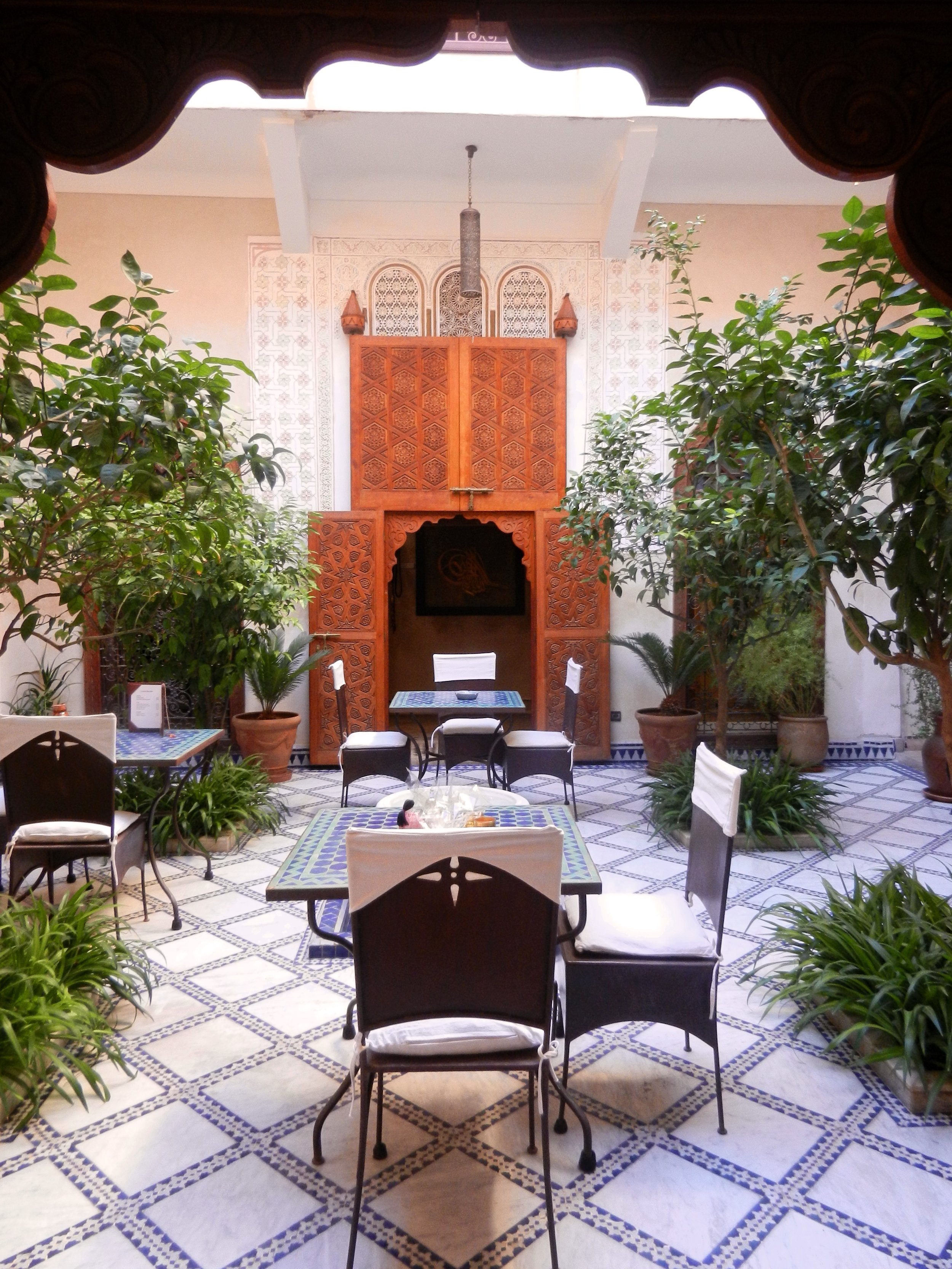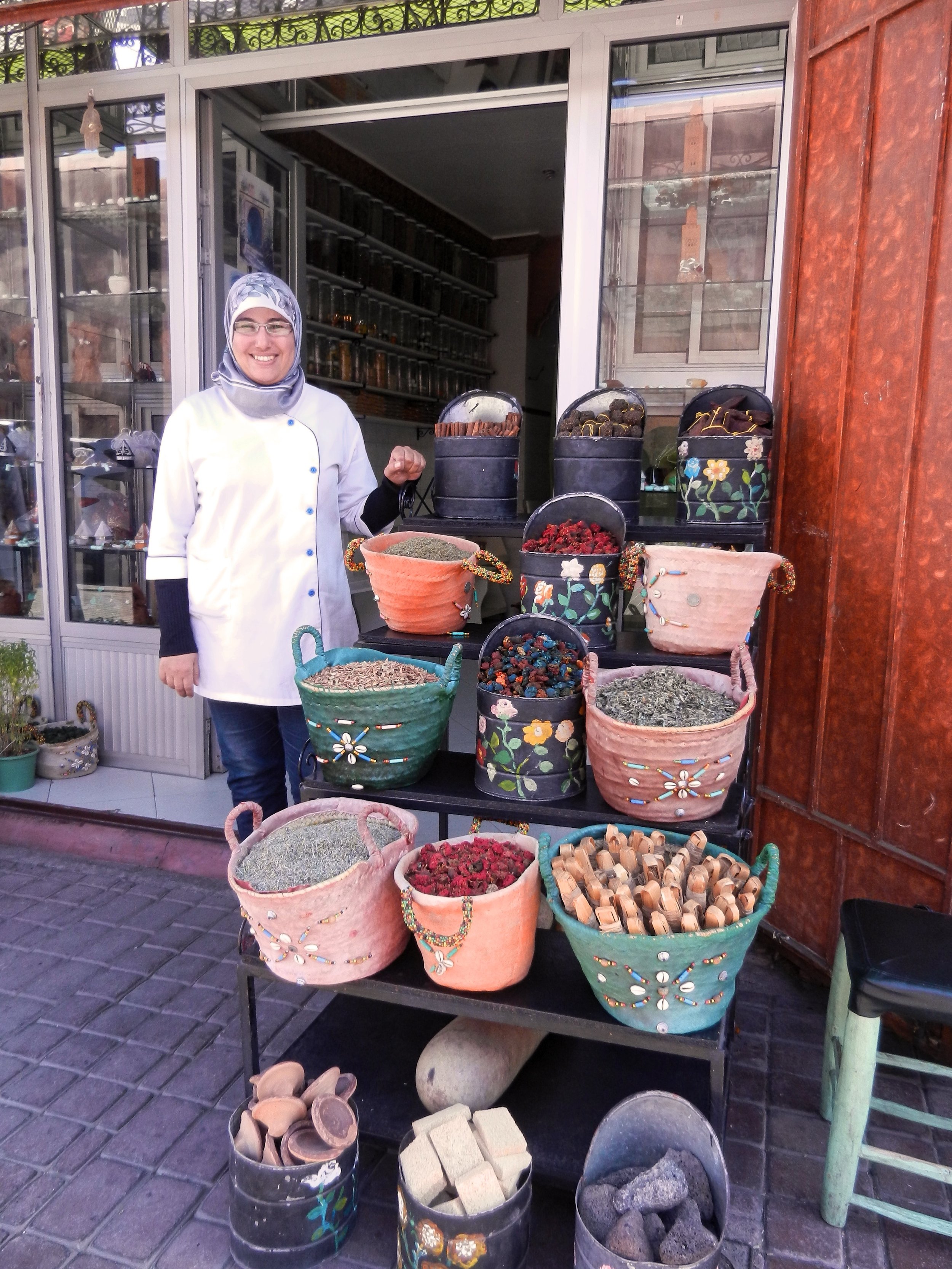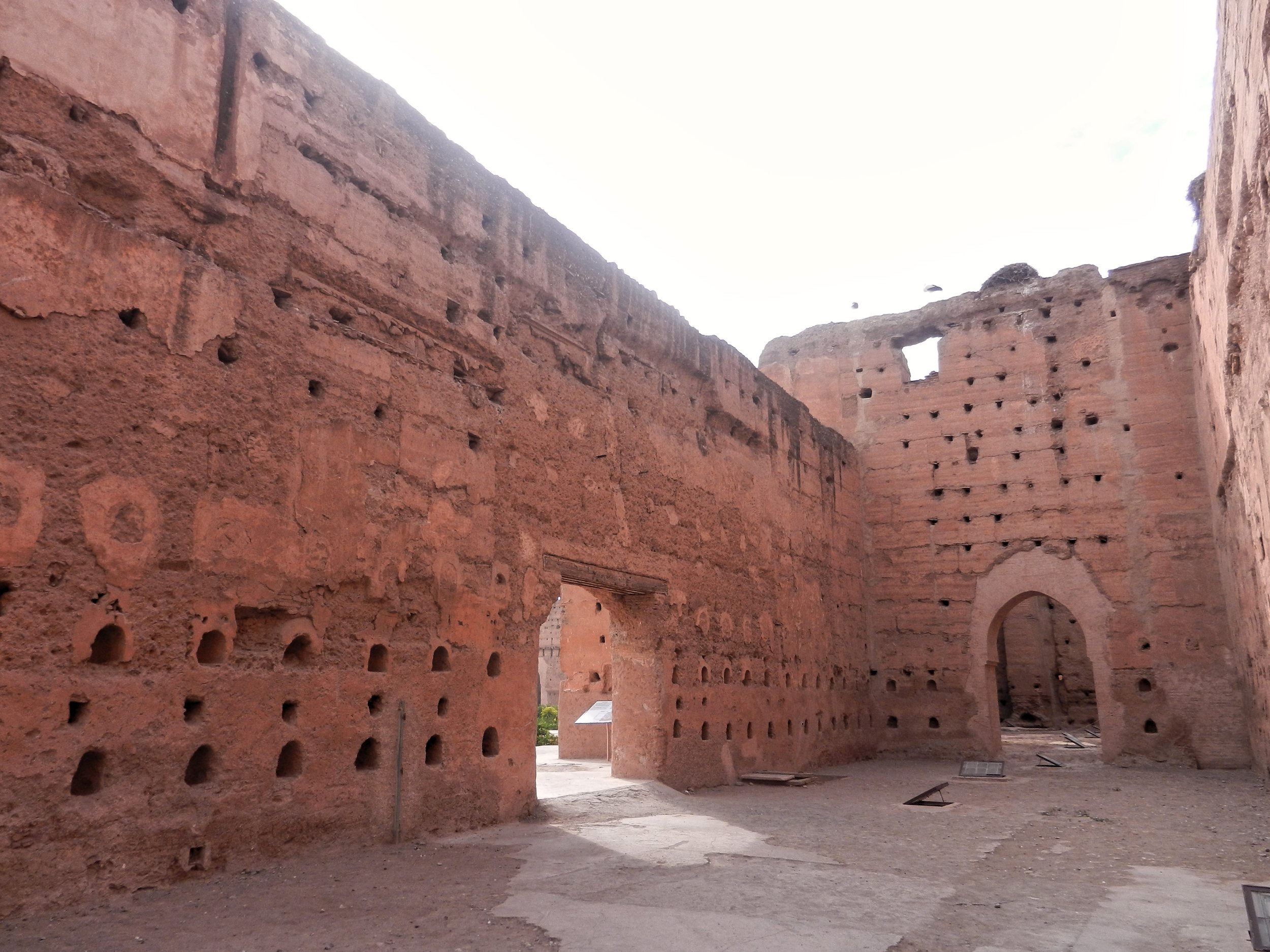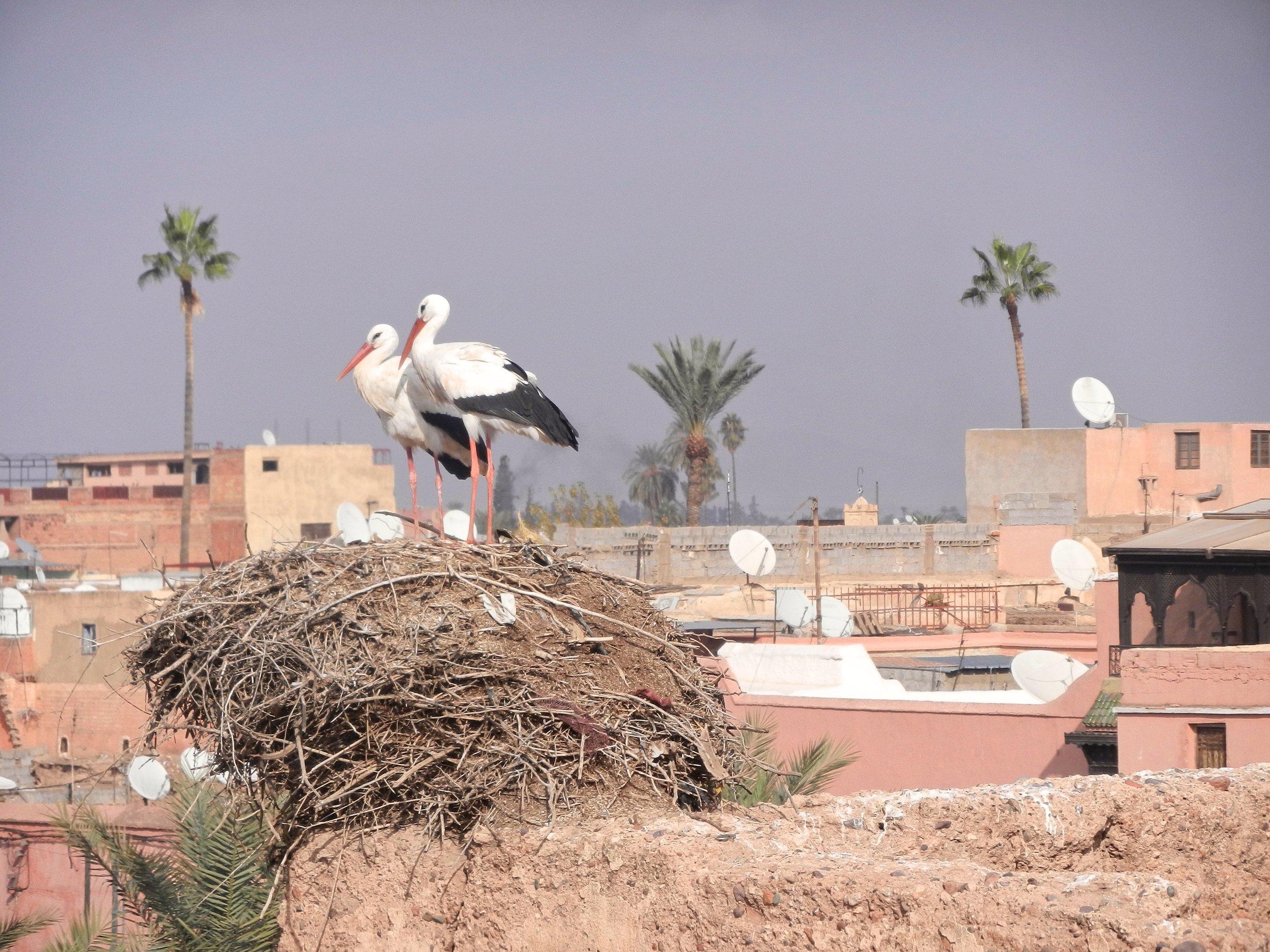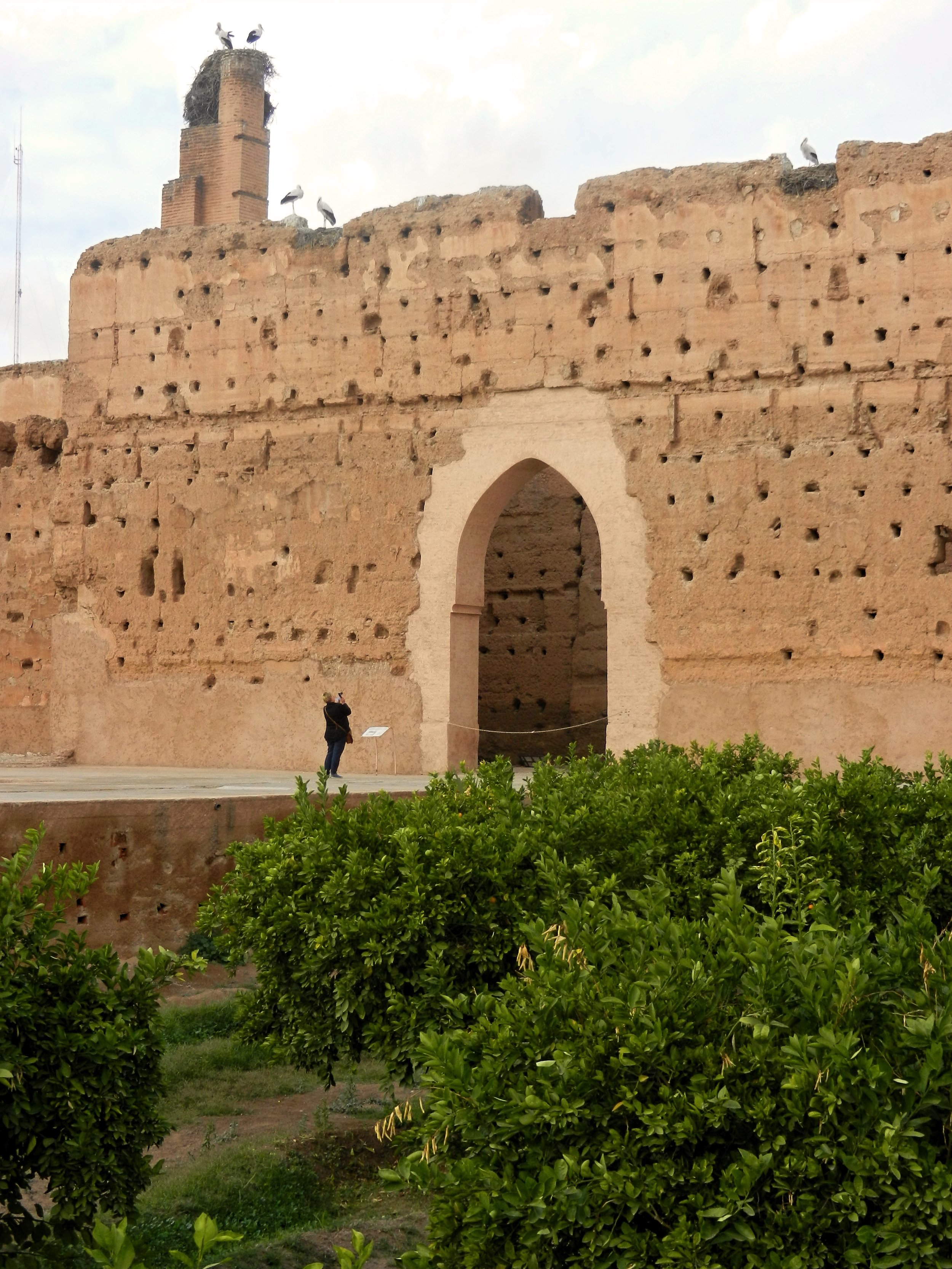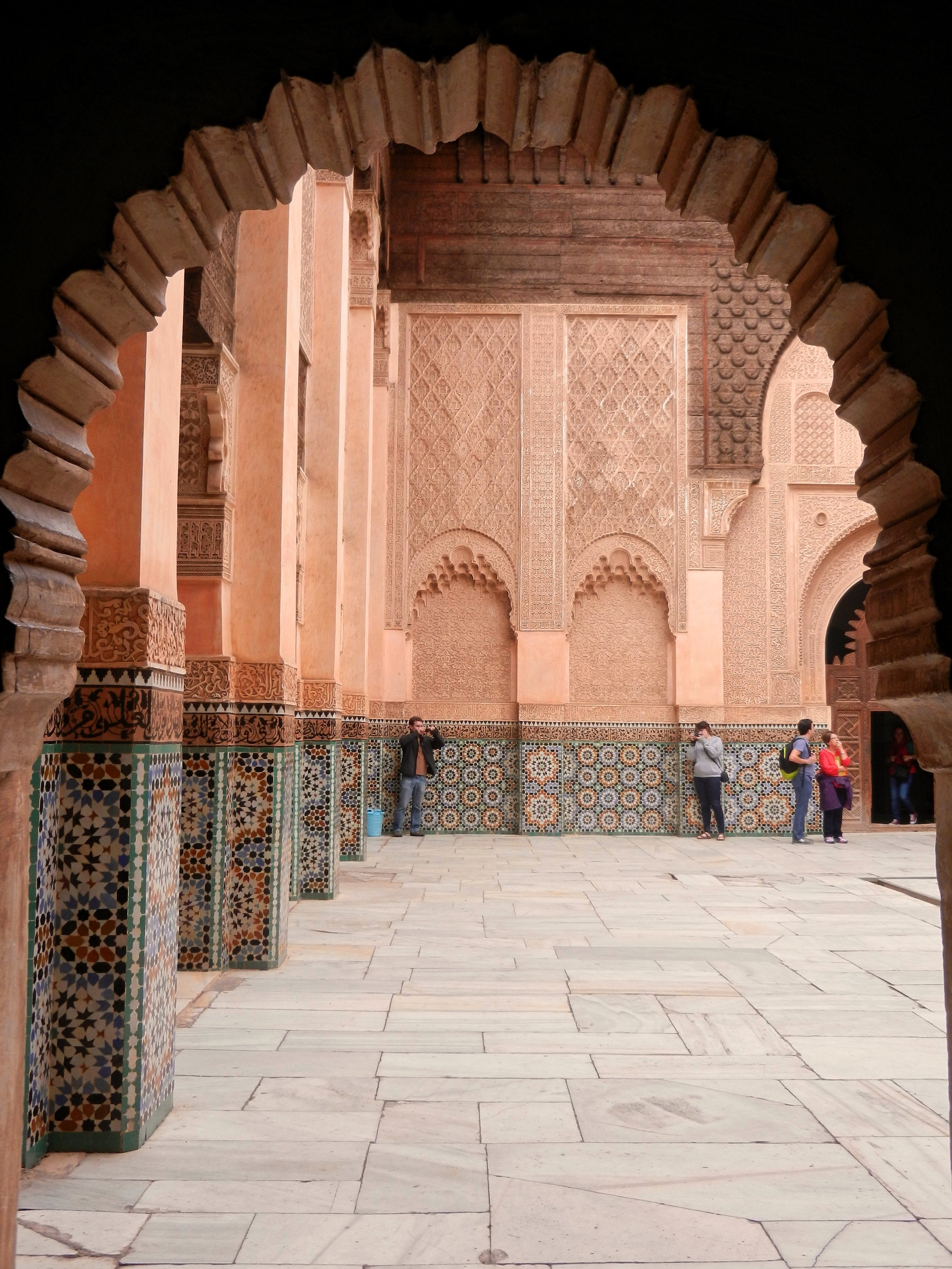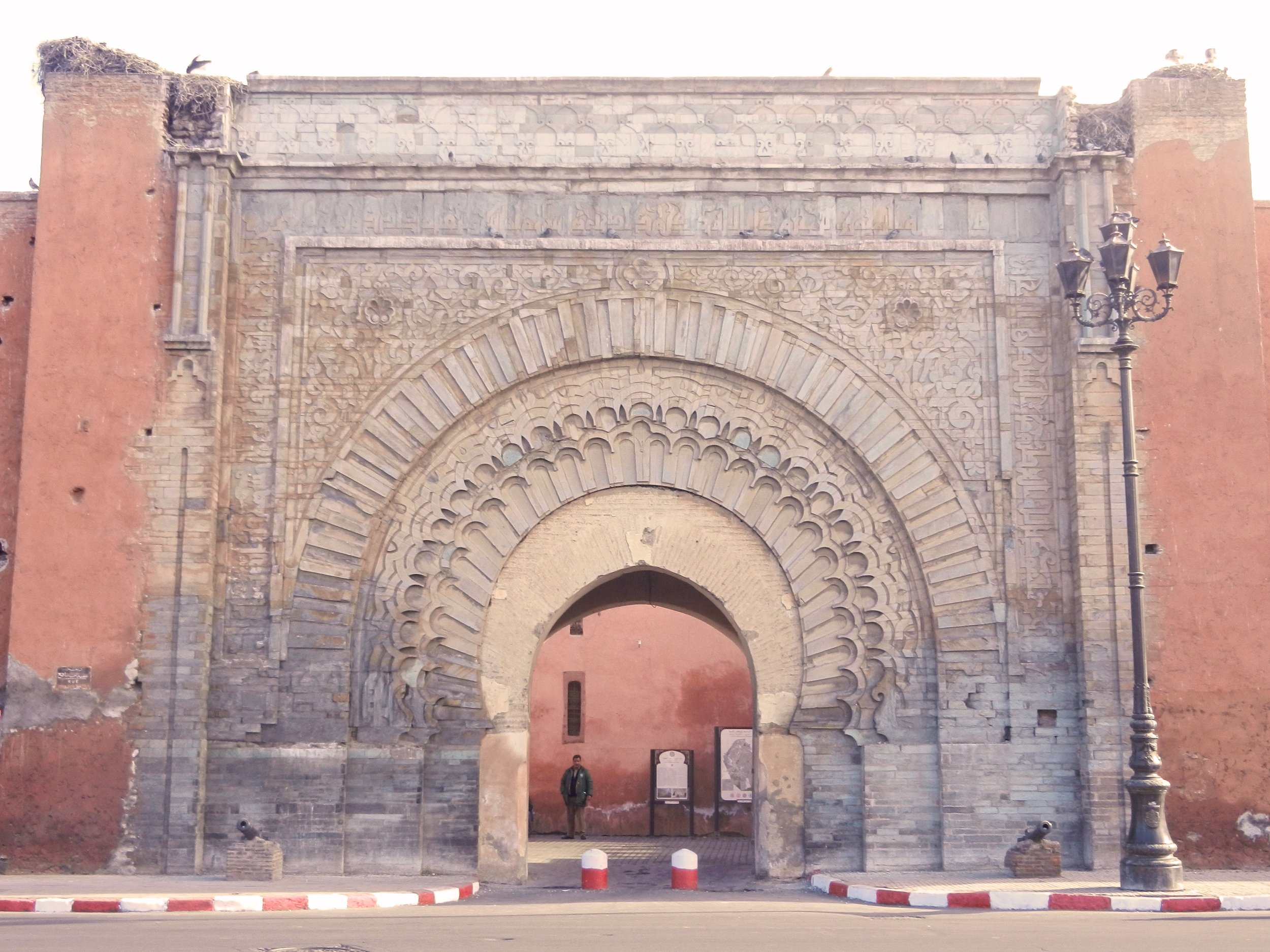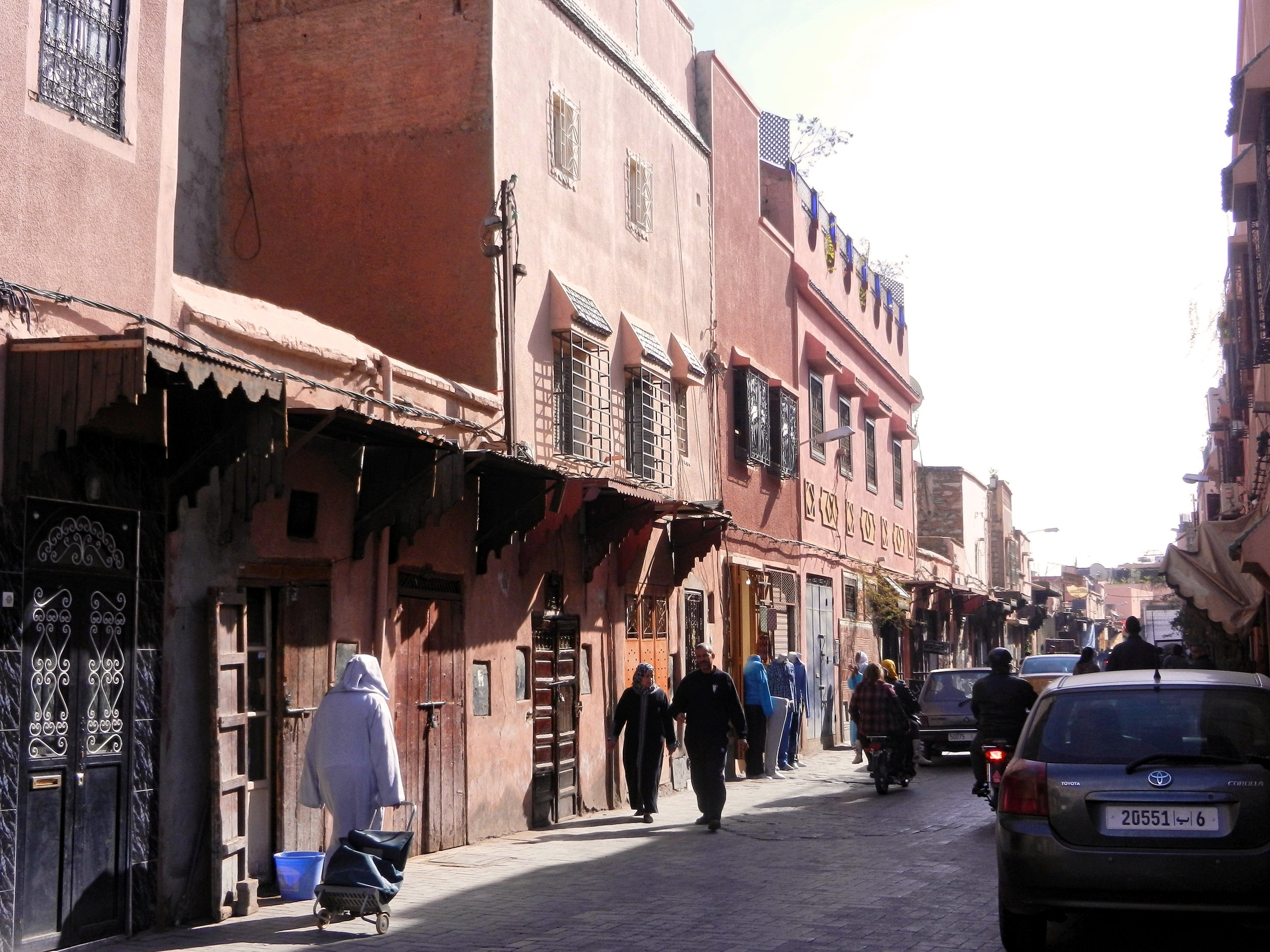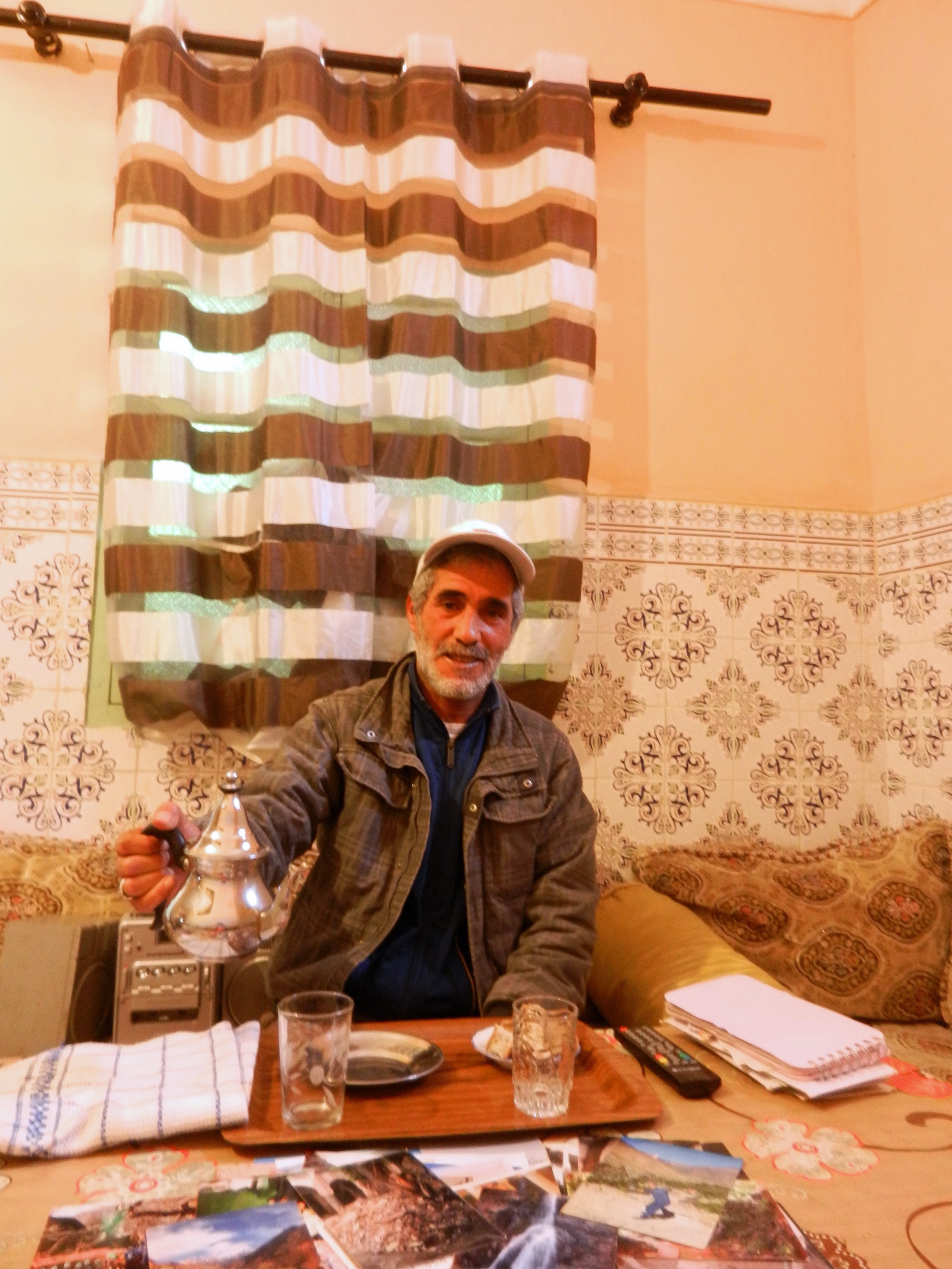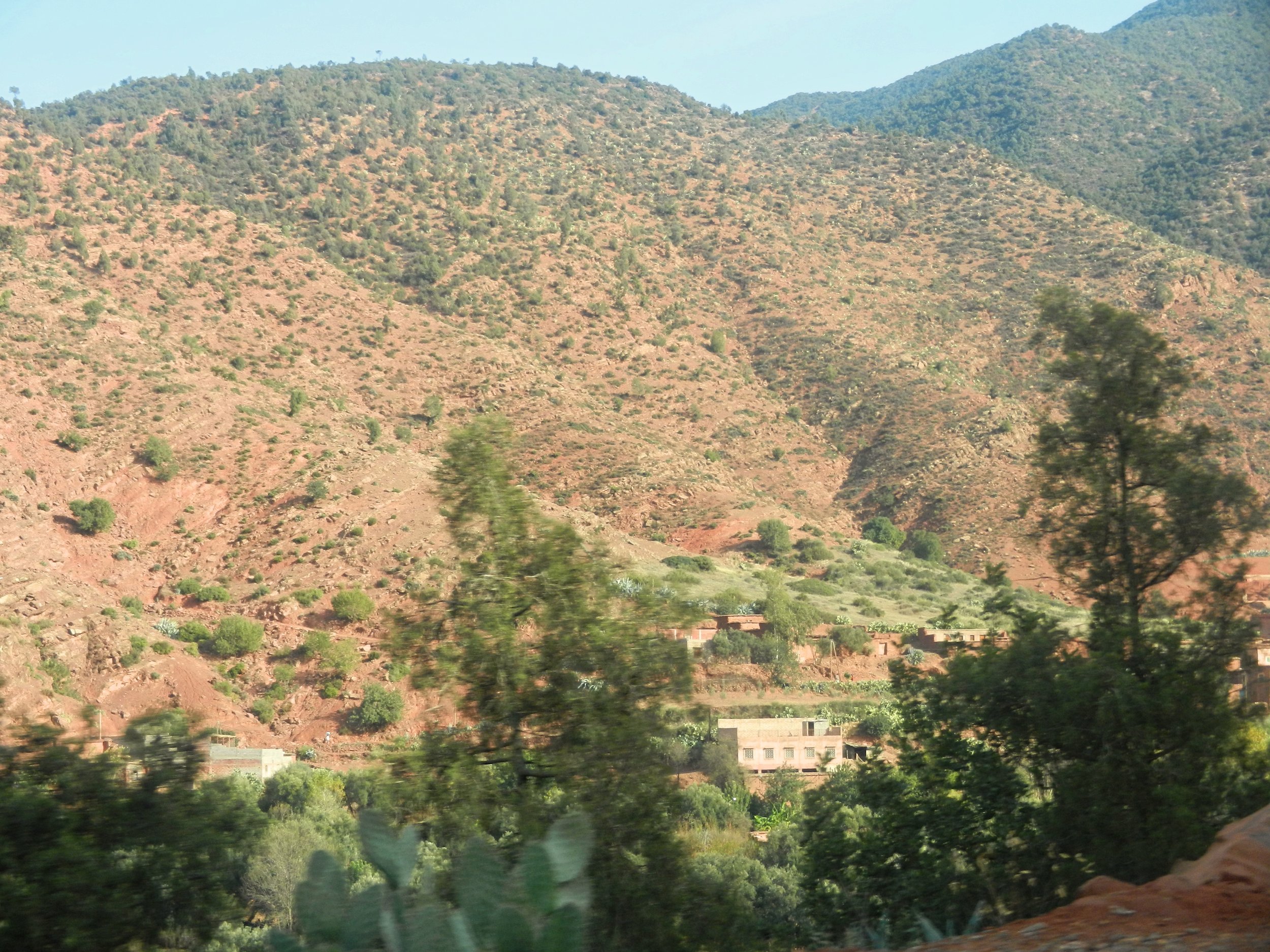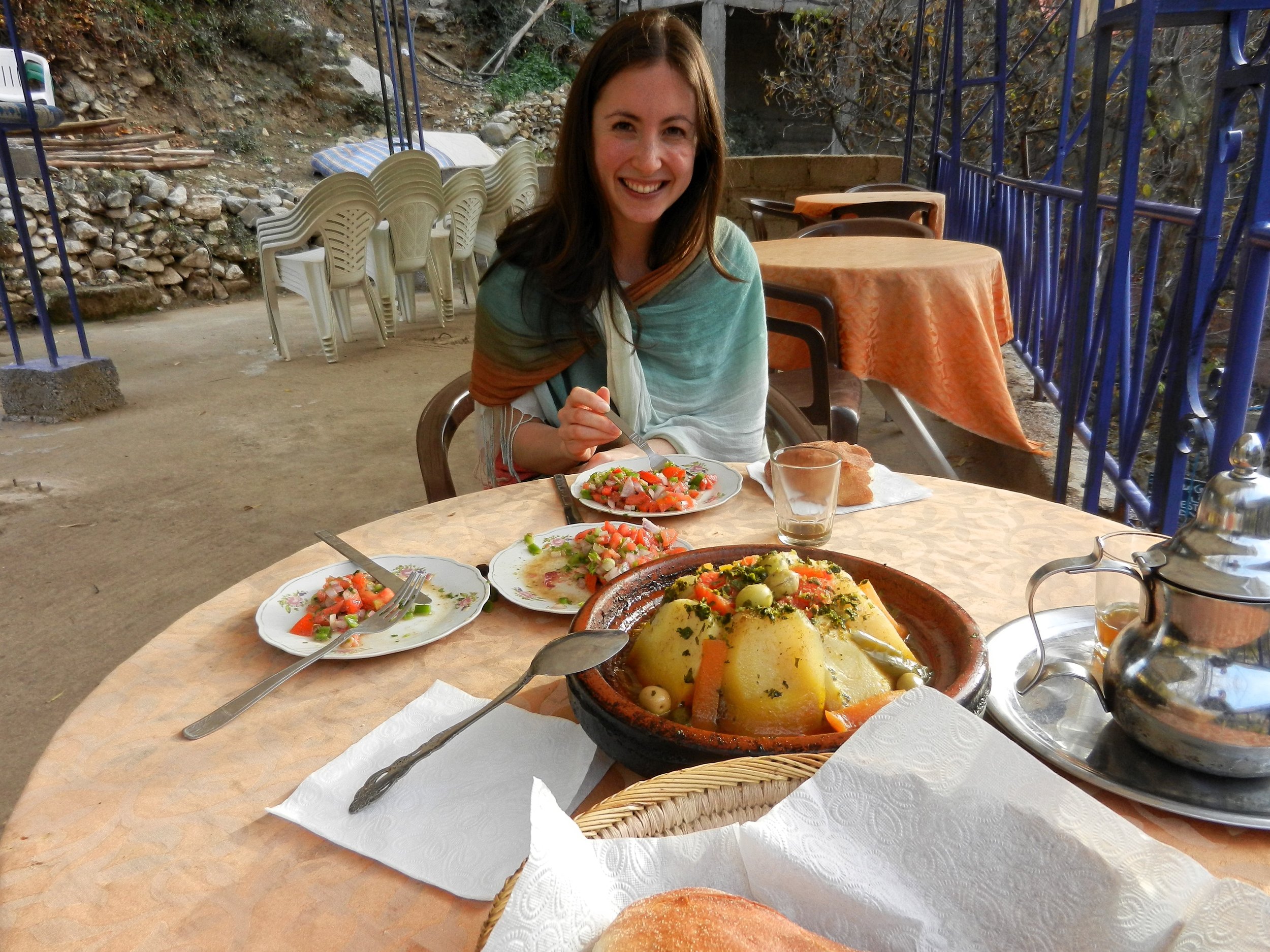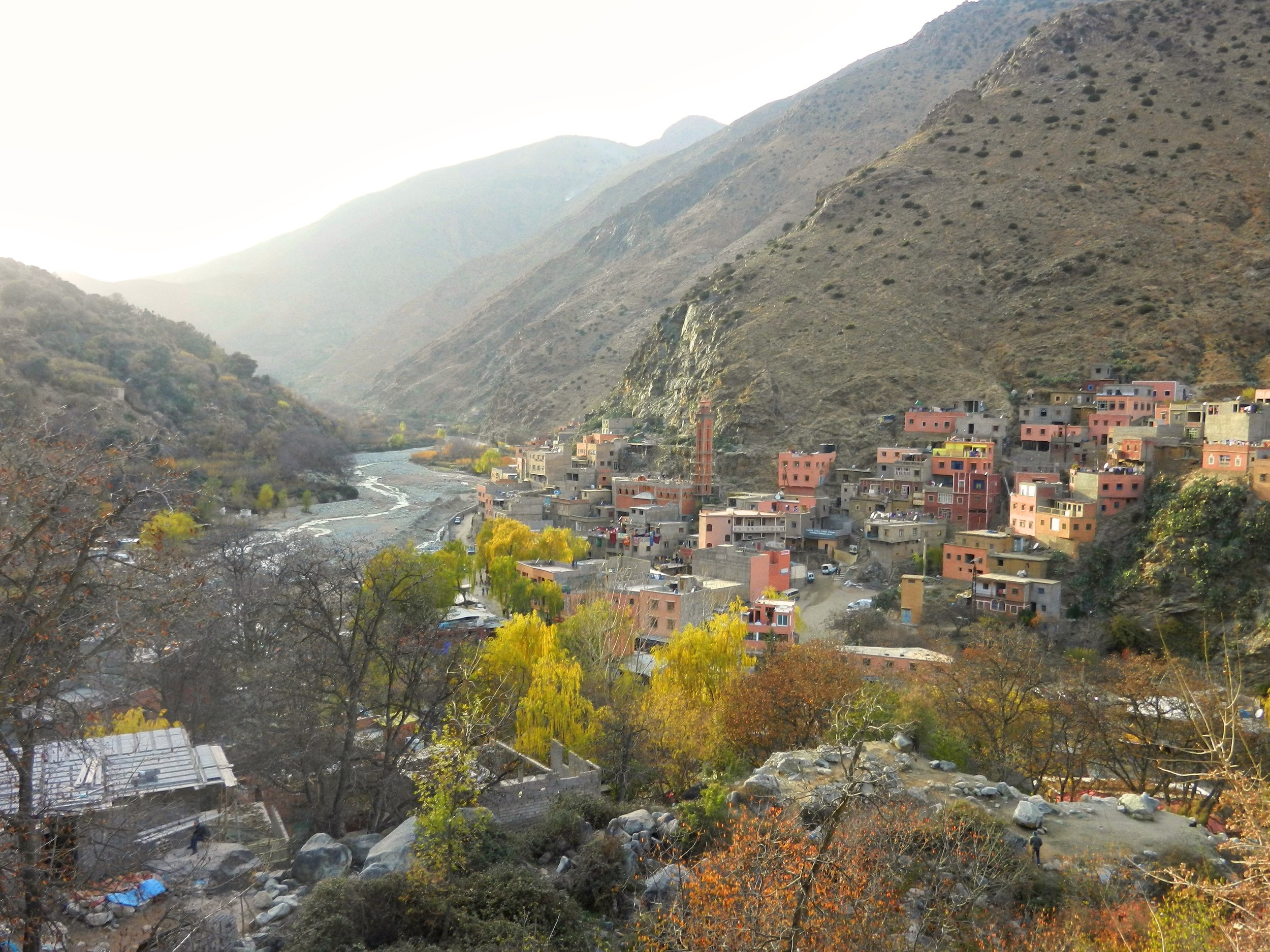Marrakesh, Morocco: A Photo Essay
[These photos were taken in 2013, long before the earthquake that hit the area in September 2023.]
After I had booked a week-long trip to Marrakesh, my friends who had been there told me I was crazy. “You won’t want to stay there for 7 days. Trust me.” “It’s too insane to stay for more than a couple of days.” “Explore other parts of Morocco – they’re much nicer.”
But I didn’t listen to them. I stayed in Marrakesh for the entire week, for better or for worse.
Marrakesh is Morocco’s fourth largest city and sits at the foothills of the Atlas Mountains. It was founded in 1070-72 by the Almorvids, an imperial dynasty of the Berbers (an ethnic group indigenous to North Africa). Many of the most important relics remaining today date back to this zenith of the western Muslim world.
La Maison de la Photographie
I was being harassed by a young man in the medina who was sure I couldn’t find this place on my own and demanded money when I arrived at it. I slammed the door shut and was shocked by the immediate tranquility of the entryway. The young man at the desk smiled and asked if I was okay. I complained about being harassed and he told me to come in, sit down, have a cup of tea and forget about it. He also gave me a historical photography book about Place Jemaâ El Fna which has a special place on my bookshelf still.
The Streets of the Medina
I stayed in a quiet part of the medina (the walled city centre covers about 700 hectares), with its narrow streets that snake through a complex web of passages and main routes. Colourful lanterns light the way as motorbikes buzz by pedestrians. Concrete buildings line each path and the sun can only penetrate limited sections of the claustrophobic labyrinth.
Place Djemaa el Fna, the main square
Place Djemaâ el Fna in Marrakesh, Morocco
Jamaâ El Fna Square is the main square of Marrakesh, where snake charmers and musicians in traditional Berber costume bump up against peddlers of juice and trinkets. At nighttime, covered stalls take over the space with makeshift restaurants that serve up couscous dishes, pastilla (a type of Moroccan meat pie), harira (a traditional soup), and even sheep’s heads and stewed snails. I tried most of it, except for the sheep’s head!
Marrakesh souqs
Babouche, Moroccan leather slippers for sale in the medina.
Various access points from the main square funnel into the many souqs. The frenetic pace of this jungle is as off-putting as it is rewarding. The streets are smashed together in a maze of chaos, with people yelling at you from all directions (in various languages). It’s exhausting and exhilarating, and many visitors only last one afternoon. If you can handle the assault on your senses, though, it’s wonderful to wander through the shops and inhale the atmosphere. I walked through the souqs almost daily and as the shopkeepers got to recognize me, I was treated like a guest by the end and had to fulfill my promise of saying goodbye to them all when I left, my hands full of scrap pieces of paper with phone numbers and email addresses on them.
Ensemble Artisanal Marrakech
The entrance to the Ensemble Artisanal Marrakech, where there are fixed prices.
If you know that this type of boldness will not suit you, another way to shop outside of the medina is at the Ensemble Artisanal Marrakech. This complex is government-run and craftspeople sell their wares in quiet shops at set prices. It’s more expensive here, but the experience is much calmer and you can often see the artisans at work. This photo is from the entrance to the complex.
Dar Si Said, the Museum Of Weaving and Carpet
This photo is of palanquins that made up a children’s Ferris wheel with a hand-crank axis. The old photo on the wall shows the wheel as it was once used.
For ancient art not on sale, the the Museum Of Weaving and Carpet (Dar Si Said Museum) is a commemoration of Morocco’s master artisans and regional craftsmanship (it also houses an extensive collection of Moroccan carpets and weavings from around the country). The oldest object left in the city is housed here, a chest from the Umayyad Caliphate of Spain, AD 1002-1007. The building itself is worth the trip.
The Tanneries
The tanneries in Marrakesh, Morocco
I was lost 99% of my time in the souqs, which locals love to take advantage of. Young men search for lost people and offer to guide you to your destination. Most will lead you to the tanneries, a tourist trap that is actually worth the visit. You’ll be given a bunch of mint to hold up to your nose as you enter the tannery, to offset the horrible smell. It is here that leather is made into beautiful handbags and other goods. (I bought a camel leather purse, which I use daily.) But, as everywhere in Marrakesh, beware: your “guide” will demand money (and even ask for more if they don’t think you’ve given enough) in a way that can leave a bad taste in your mouth. Get used to the aggressiveness of salesmen.
Musée de Marrakech
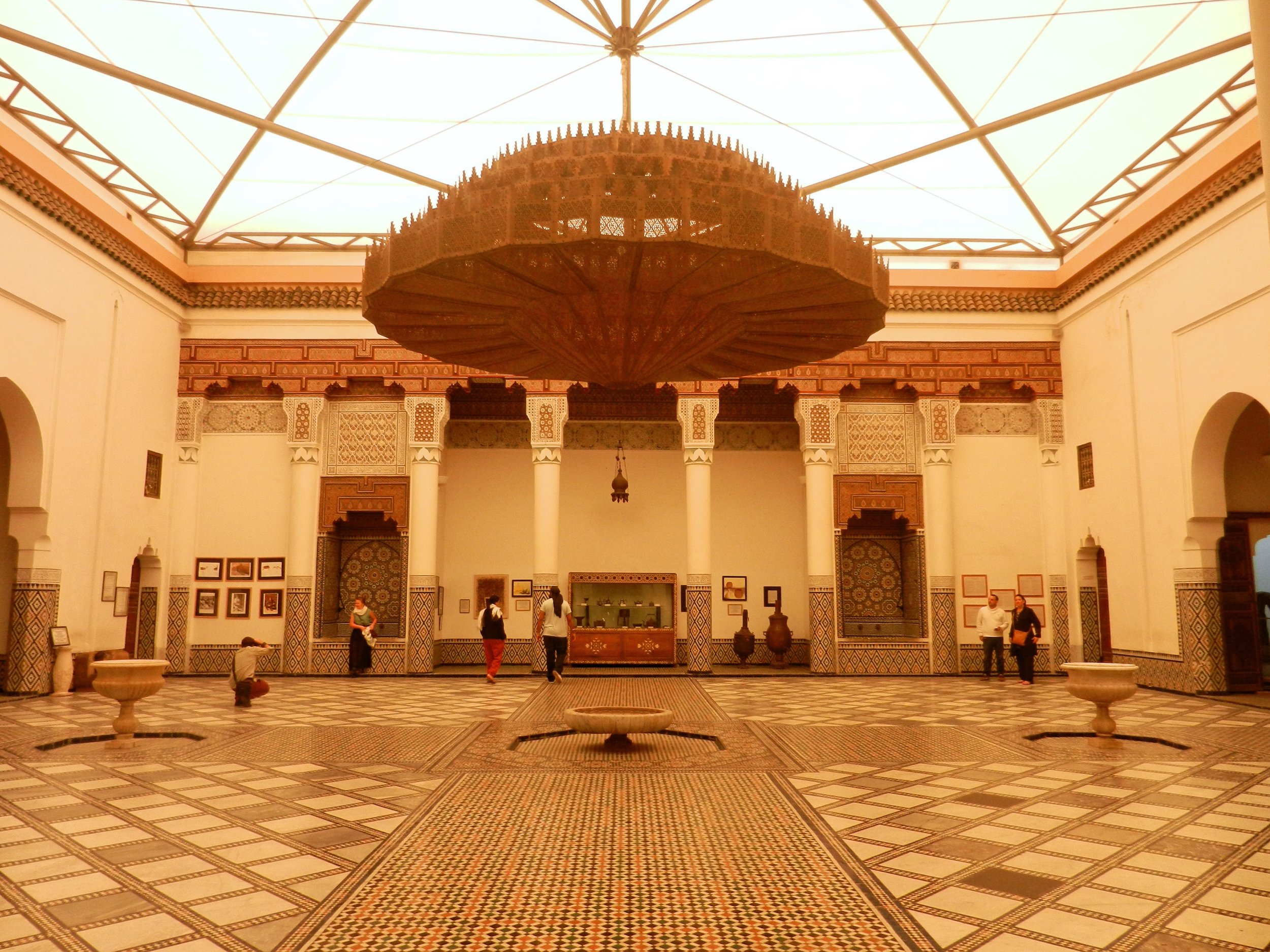
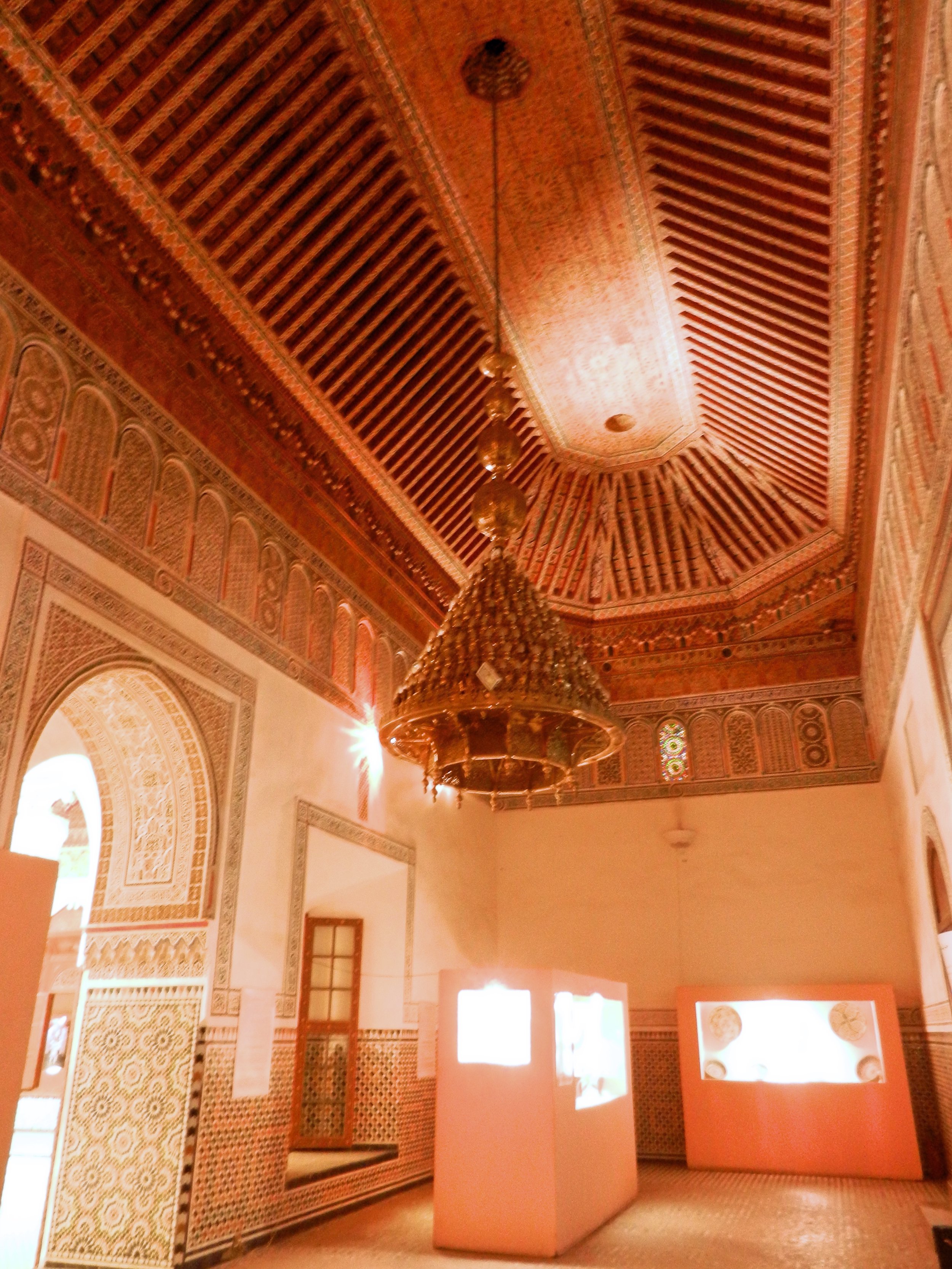
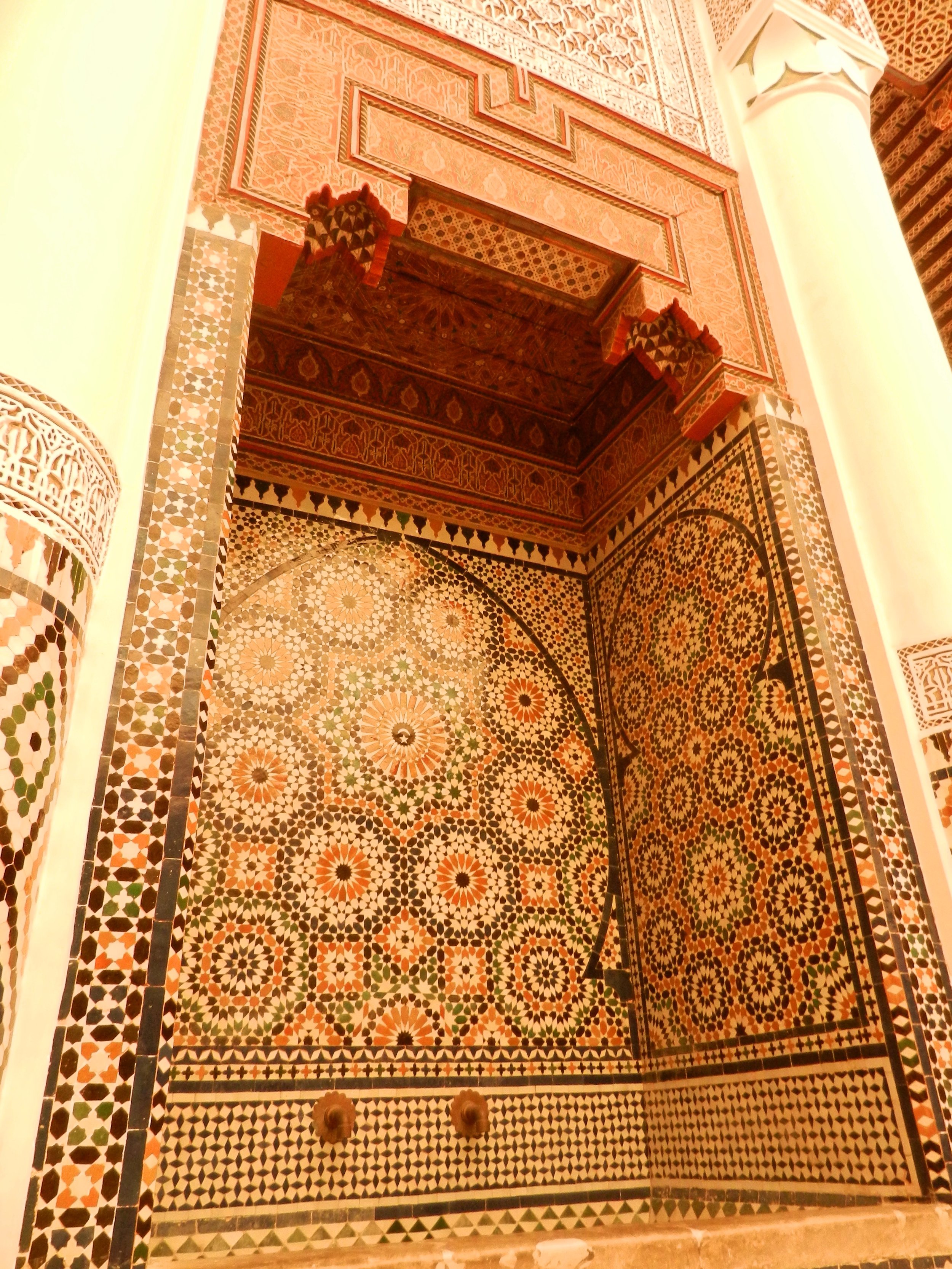
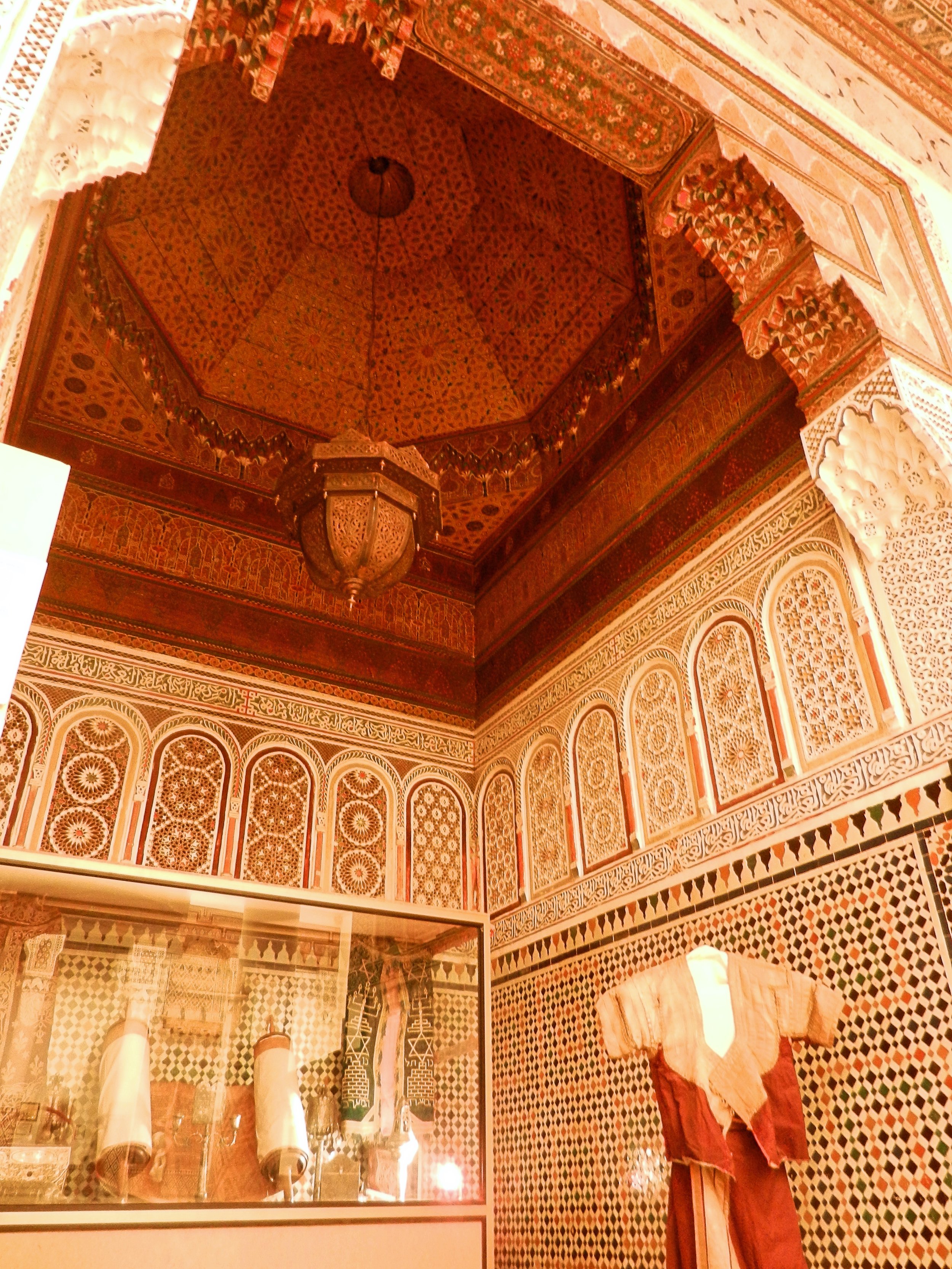
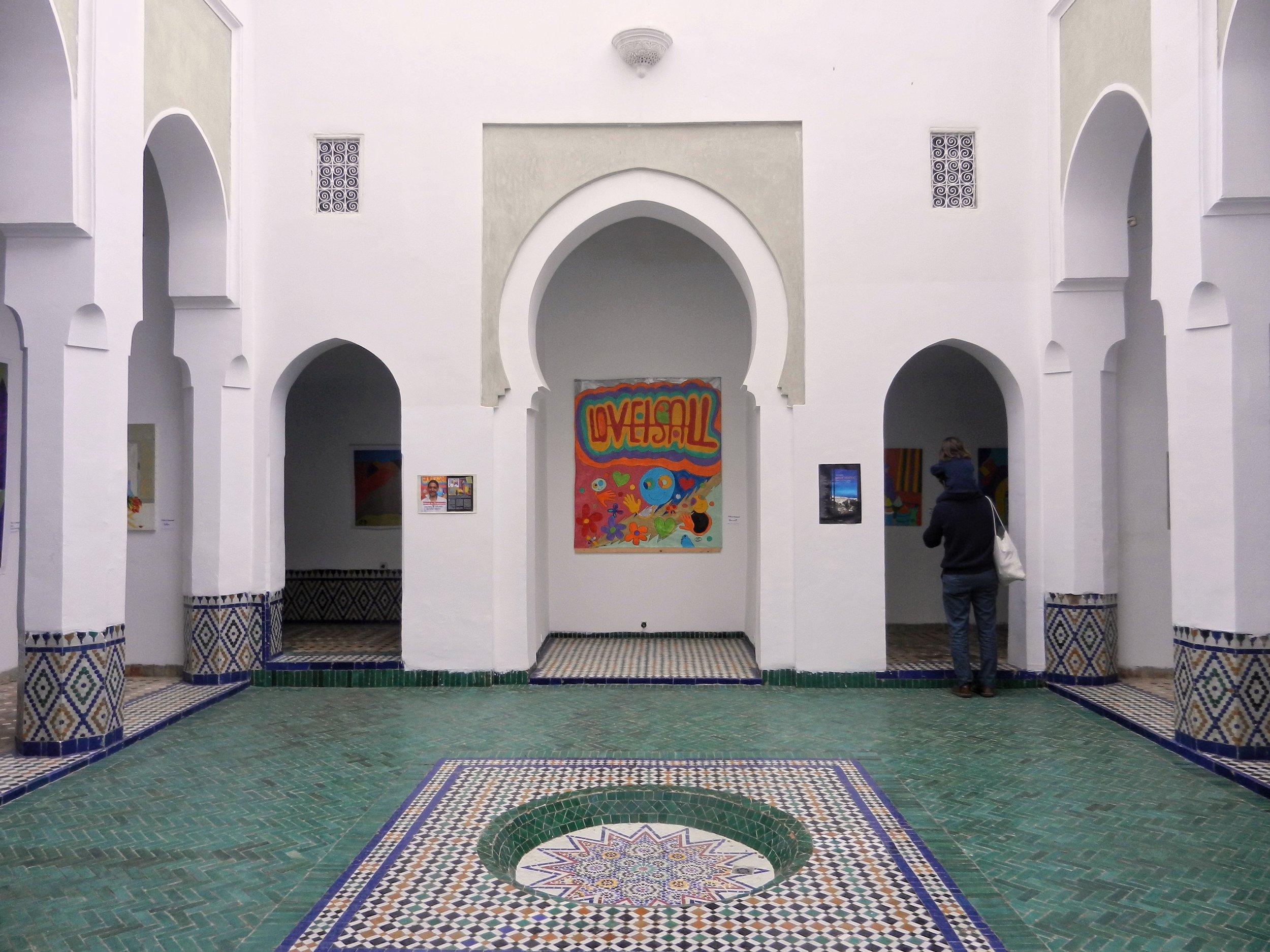
The Musée de Marrakech is another calm spot to counter the madness of the souqs. It’s housed in the Dar Menebhi Palace from the 19th century, an example of classical Andalusian architecture. The intricate tile work, carvings and mosaics are gorgeous. The museum houses ancient artifacts from the Moroccan Jewish, Berber and Arabic cultures, as well as traditional and modern art exhibits.
Palais El Badi
Although not much remains of the 16th century Badi Palace except damaged walls – the palace is only home to families of storks now – I still enjoyed exploring the relics, of which you can duck into and walk through parts of. Pay the extra dollar or two to see the Kutubiyya minbar, a platform used by a preacher during prayers. You can see calligraphy from the 12th century and beautifully carved cedar steps with marquetry throughout.
Saadian Tombs
The opulence of the Saadian Tombs makes walking into burial chambers quite pleasant. Sultan Ahmed al-Mansour ed-Dahbi used Italian marble, pure gold and muqarnas (honeycomb plasterwork vaulting) to build his tomb, where he was laid to rest in 1603, along with princes, advisors, family members and over 150 wives and chancellors.
Medersa Ben Youssef
The Ben Youssef Medersa was a Quranic learning centre founded in the 14th century. The cedar cupolas (made of wood from the nearby Atlas mountains), mashrabiyya (a window enclosed with latticework seen in traditional Arabic architecture) and mosaic walls are exquisite.
Jardin Majorelle – Musee Berbere
A complete departure from the chaotic and dusty streets is the Marjorelle Garden. It was bought by fashion designer Yves Saint Laurent and his partner with the purpose of preserving the vision of its previous owner, painter Jacques Majorelle. The nearly two and a half acres of gardens are now filled with cacti, palm trees, bamboo and agaves from all over the world, as well as birds, streams, and pools with lotus flowers and waterlilies in them. These surround a bright blue art-deco house, where the interesting Berber Art Museum is located.
Bab Agnaou
Entering back into the medina, the ancient Bab Agnaou sits at the south end of the walled city. The orange-red clay stone is arranged in regular lines around the arch. Floral decorations and calligraphy engraved into the stone adorn the cornerstones and frame panels. This 12th century passageway was once the official entrance to Marrakesh and leads to the Kasbah district. This is where the royal palaces are located and where the Jewish quarter (Mellah) once was, although today it’s mostly Muslim. There isn’t much tourism here, other than visitors to the palaces, so it’s a great area to walk around.
The Kasbah
It was in the Kasbah that I was invited in for tea while walking along an empty street, children riding by on their bicycles repeatedly to check me out.
Abdelhadi serves me tea. We communicated in French, so I was able to spend the whole afternoon and evening with him, and meet his wife.
Ourika Valley
After tea and conversation, Abdelhadi offered to take me to the Ourika Valley, 30km from the city. For a paltry sum, we took a taxi out to the valley, where the river flows down from the High Atlas Mountains and the Indigenous Berber people are a world away from the urban chaos that is Marrakesh. The main drag is busy with day trippers but Abdelhadi knew a restauranteur who had an empty rooftop deck where we dined on lamb tagine.
Book recommendations: Lonely Planet Pocket Marrakesh, Moon Marrakesh & Beyond: Day Trips, Local Spots, Strategies to Avoid Crowds, and the Pocket Rough Guide Marrakesh.
* The above links are to Amazon and are for your reference. I receive a small referral fee if you buy from Amazon. But I encourage you to buy books from any retailer, ideally your local bookstore!

